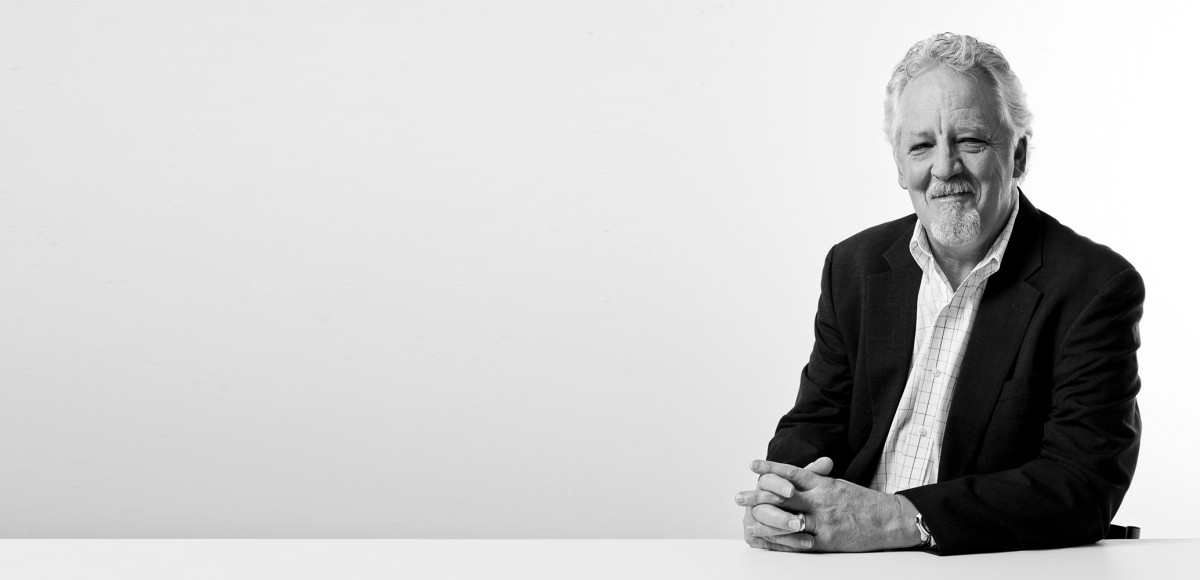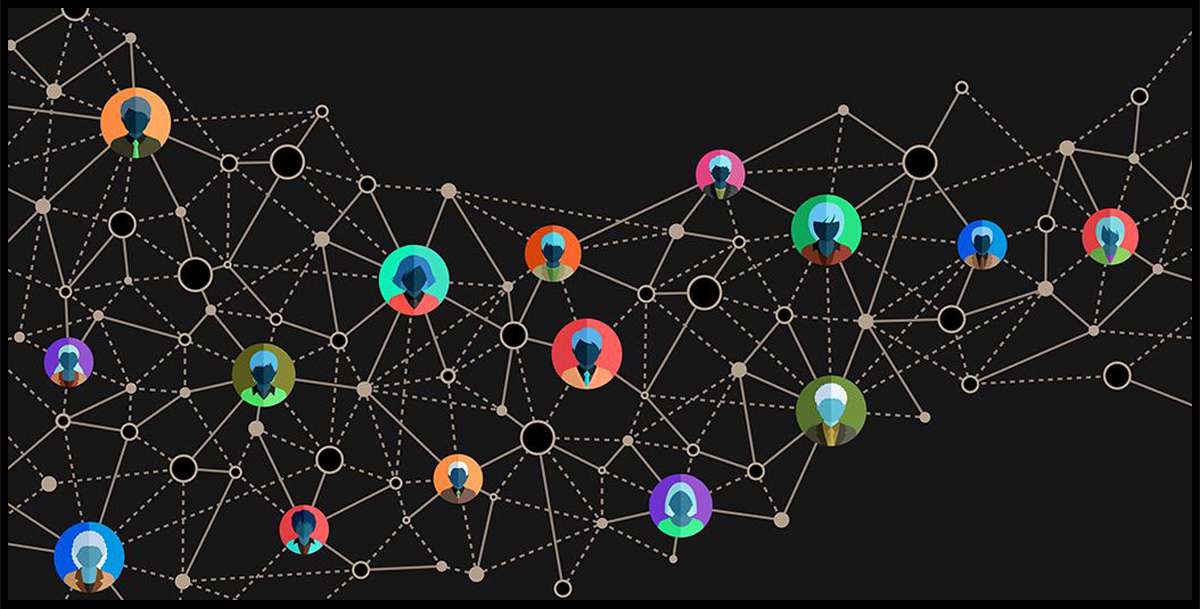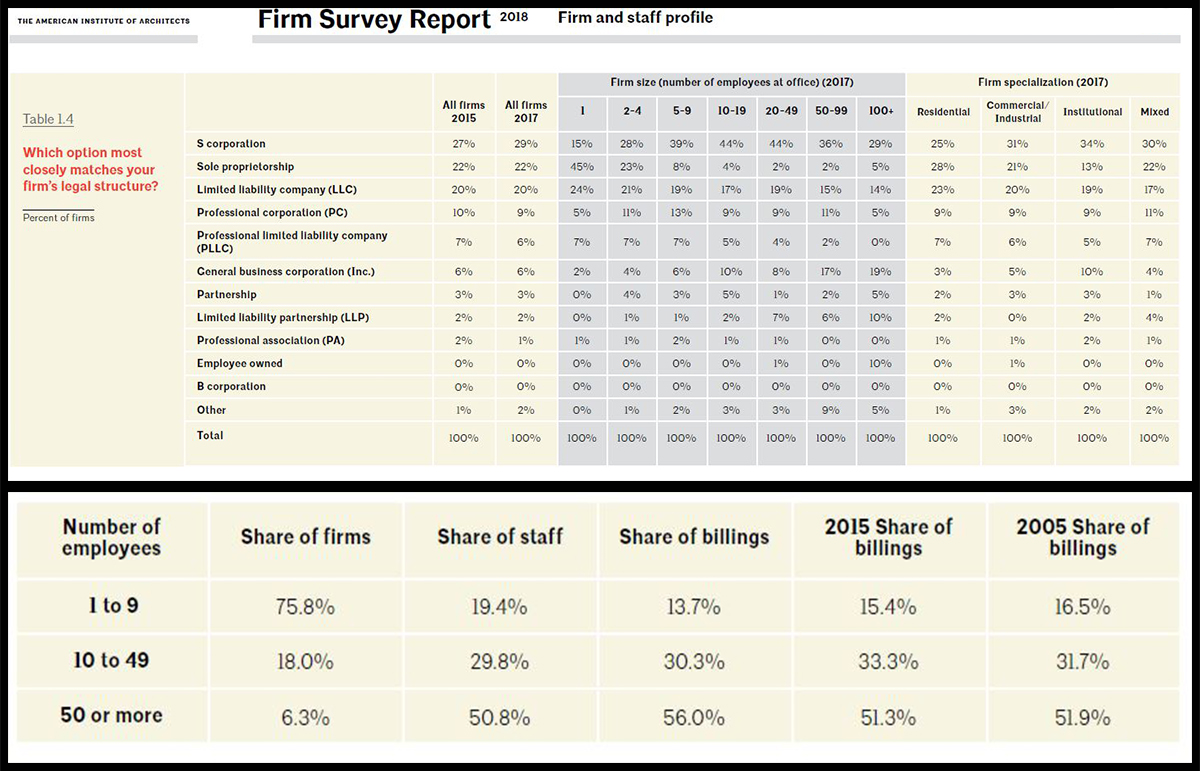Inch wide and mile-deep versus mile wide and inch deep … the “Jack of all trades/Master of none” vs. “The Specialist” … conceptually this is the idea that distinguishes the nuances between a small architecture firm and a large architecture firm. But is that really true? Should it be true? How should this idea measure philosophically into how you run an architecture firm whether it’s large or small? This is the topic we are tackling today on Episode 89 “Small Firm Mentality”
[Note: If you are reading this via email, click here to access the on-site audio player]
Podcast: Embed
Subscribe: Apple Podcasts | Spotify | Android | iHeartRadio | TuneIn

Mike grew up in the SE Houston suburb of Pasadena and attended the School of Architecture at the University of Texas at Austin. After graduation, he remained in Austin working for Sinclair Black, FAIA until moving to New York City where he spent his internship, primarily at Hardy Holzman Pfeiffer Associates. In 1983, after a visit to Texas, he and his wife packed up and left New York City for San Antonio. With UT classmates, Irby Hightower, Mike Lanford, and Billy Lawrence, Alamo Architects was founded in 1984. Their broad practice of 55+ employees is focused on K thru12, Higher Education, Retail and Commercial Development, Preservation and Adaptive Reuse, Multi-Family, Interiors, Urban Design, Civic Engagement and Master Planning.
In addition to his leadership at Alamo, he has taught at UT Austin and UT San Antonio, lead mission trips to the Texas, Mexico border, served with a variety of non-profit and civic organizations and is the current citizen architect, curmudgeon-in-residence on the City of Alamo Heights Architectural Review Board.
Mike has been a member of AIA since 1997 and has served in a number of leadership positions with AIA San Antonio and the Texas Society of Architects and AIA Strategic Counsel at the National level.
So let me set the table for how today’s topic and our guest came to be (not in a reproductive way). Since I’ve made the switch from working in a small firm for the vast majority of my professional life, Mike and I were talking about how that transition was going. While our conversation wandered a bit – as will happen when tacos and margaritas are involved – Mike followed up with a text to me later that evening that read:
“I / we’ve been trying to run a 50+ person practice as a small firm for the last 20 years … I’ve got some thoughts.”
Let’s start off our chat today with talking about “why” someone would want to run a larger firm as a smaller firm. Clearly, this is a group that thinks there are some benefits to this way of running a practice. 4:02
Mike: I had the advantage of working for a good architect when I was a student. I did this both during school and then for a small bit right after as I was still in Austin. Working for Sinclair Black in a small firm made me learn a lot early in my career. I think that most firms grow out of small firms, and it doesn’t seem to make sense that they are not operated in the same way. I was also able to work with some fantastic young architects when in New York. I often wondered why they did not seem to treat us better at that time, but I think I realized they knew that people would be changing and leaving. This was just a part of the process and they knew it and just let it be part of the company. So the idea that the highly motivated individuals might not stay with their company and it was almost anticipated.
Mike: We sat down when we started our very first project, and we said we all want to be architects, we will do all these things together (design, business, marketing, CA, admin), but we are not going to assign responsibilities. The goal was not to pigeonhole the founders into specific roles of business, design, production, etc., etc. It was a conscious goal not to do that in the beginning, so we could all grow as architects first. That seemed to make our more “organic” growth happen. Every person we interview asks … “What’s our organizational structure?” Well, we are really interested in being good architects and all that other stuff we share equally and inefficiently. So, for example, things like your annual review may not occur on the exact day you were hired. But we will get to it at some point.
How large were you when the individual roles started to settle? 16:40
Mike: It was about 20 people when that all settled out into our more specific “specializations.” We have all settled into our more desired roles. We eventually gravitated towards our interests, and now mostly as the founders work primarily in our areas of interest. This evolved over time, and it was mostly a natural shift. But this began more when we hit around twenty people in our firm. But that was also more related to the size of projects as opposed to just the size of the firm. It was more about the size of the projects we were beginning to take on. The larger projects required some specialization. So does this lead to specific set groups of employees? Well, we don’t really do that in our office. It may be a fairly inefficient way to run projects, but we just try not to silo our employees in this way. The only group that truly exists is the multi-family group. This is mainly because that project type works in its own way. They design, regulation, construction, etc., all work in a more unique way in that market sector, so that group tends to be more “silo-ed.”
The different types of employees in a firm? (Developing the “Capital A” Architect) 26:20
Mike: This requires a commitment to mentorship. That is not a natural fit for many firm leaders. I am not certain we have created a strong mentorship condition, but some firm owners are not good at this. Luckily we have some associate-level people in our office that have helped create that for us. They began by asking people in the office what they wanted to know more about and be mentored. It was a good way to understand what people wanted to learn. There are so many different types of people in an office. In a larger firm, there will be some natural stratification of employees, and people will bubble to the top. Some others want to just put in their eight hours a day of drawing and producing and then go home, and that is okay. But you also have to have some way to mentor those people who want more. Employees who want to get more mentorship and move towards this notion of “capital A” Architect need to have support. These are the people who need to have some support and want some guidance to grow as an architect. Those “heat-seeking missile” employees need to have that mentorship, especially if you want to keep them in your office. But I think if you actually mentor someone, you are actually showing them how much you care about them. This is a place that wants to take care of me and help me where I want to go. We also decided to have a reverse mentorship that was put in place by our associate-level staff. There is something that everyone can learn from others, no matter the experience levels.
“I think at 50 people you can know everybody’s name, you can know something about them personally, and you should be able to find something to share when you are in the plotter room, at the coffee machine, all those sorts of things. I think that goes to building some type of culture.” – Mike McGlone
Do you have firms within firms? Does firm culture reflect how leadership wants to work? 39:25
Mike: This happens a little in our office, but since our leadership and principals work across market sectors and project types. Our employees help out on all types of projects, which keeps this from happening as much. Since we all were similar when we started, we seem to limit the variation in our trains of thought. At times, I can say that it has been really great that we were friends before business partners, and then a few times when it was not great. There was one time when a couple of our partners wanted to move. This was based on personal motivations, but it was a poor business concept. We eventually did not move, but it really put a strain on our relationship for a while. Although we now have another generation of leadership in our office, we are ensuring they embrace the firm culture that we have established. But they have been with the firm enough that they already understand.
At what point, as an owner, at what point do you feel like you lose control of that? 44:02
Mike: We went through a management analysis a few years ago, and it made us put our core values into actual words. I think that was the most significant thing that we have done in a long, long time. To be able to say this is what Alamo Architects is about. It flowed from our four founding personalities and what we believed in, and how we treated people. It was the best thing we have ever done. The entire firm was involved, and it allows everyone in the firm to say that is who we are, and who I am, so let’s get after it. I think you cannot manufacture firm culture. I think you can build firm culture, and you can hold on to it and allow it to ebb and flow as it needs to grow over time.

The hiring process in small versus big? 46:50
The hiring process is often a different condition at small firms versus larger firms. At times, larger firms are only seeking to fill a certain role in the firm. This may be due to the loss of that person or the need for more at that level. It seems that they are less likely to hire for “fit” than for just filling a position. This seems especially true in the upper levels of hiring. It may not be the case at entry-level positions.
Mike: The idea of hiring for positions is one that is more common in larger firms. The ability to hire a person for their abilities versus the role they can fulfill changes in larger firms. The larger firm needs to have specific positions that sometimes need to be replaced due to need. I think the challenge for us all right now in our profession right now if we are committed to equity, diversity, and inclusion, is to stay how am I Mike McGlone, Bob Borson, or Andrew Hawkins, we each have to say how we are going to move the needle as opposed of saying that is somebody else’s thing. There is some difficulty in that because I tend to hire (until the last five years or so), I did the final interviews and made the final decisions about hires. I based it on do you fit, are you going be happy and successful, and then that makes us happy as a firm due to your success, and then lastly it was, do you fill a need. We should have hired for need at some times. The point is that when we have been successful, we have tried to hire people that we feel will be a good fit for us. There are certain checkboxes on a resume and experience also to include. It seems to be much, much harder to hire for need at an upper level. Another issue is that as you grow and are a larger firm, sometimes you simply need warm bodies to do the work. We try very hard not to be an office that “hires up and fires down.” I don’t believe that is a fundamentally successful way to run a practice. I don’t want to be the way we run the office.

Who is on the Bus? 56:08
The notion of “Who’s on the bus?” This is a way to evaluate the employees’ ability to make working in the office better. They want to make the office better by their actions and what they do. It was not about job performance or “bottom line” stuff. It is more about the employees’ ability to contribute to office culture.
Mike: What is the value of your contribution? Value is not about dollars and cents. That is the question you have to ask about your employees as an owner. Some of it is whiz-bang, I can get it done, and then others are just the “you just gotta have people like that” roles. We have several like that. When we look at our admin staff which is very small, they are all people that have enormous value beyond their job descriptions.

Would you rather? jump to 58:46
Would you rather take a bath in Oatmeal or Jello?
The answer here is actually unanimous. We all chose the same response albeit for completely different reasons. Mike comes out swinging with a controversial response but Bob and Andrew manage to tone it down a bit and pull Mike into our typical web of ludicrous rationale and reasonings as to why one answer is definitely correct. If you choose the opposite answer to the three of us, then we may need to have an intervention.
089: Small Firm Mentality
The discussion about operating a larger firm with the same intent, care, and personality of a smaller firm seems to hold some weight after this conversation. While all firms start out as small, those that grow to be large and super-sized may lose the same character, culture, and personal feel along the way. Through our conversation today we were able to provide some insight on how it might be possible to maintain that small firm mentality even as the firm grows and changes over time and with new leadership. We want to thank Mike McGlone once again for taking the time to share his valuable lessons with all of us in this episode.
Cheers!

Special thanks to our sponsor NCARB, which is conducting a profession-wide study called the Analysis of Practice. If you are an architect, or in the process of becoming one, your participation is valued and important in shaping the future of the licensing process. Please visit ncarb.org/AOP and be a part of the change you want to see.



